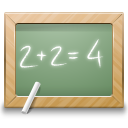
Next: angles.diff_frame Up: The list of functions Previous: align_tensor.set_domain Contents Index


Calculate the singular values and condition number for all alignment tensors.
basis_set: The basis set to operate with.
tensors: A list of the tensors to apply the calculation to. If None, all tensors are used.
precision: The precision of the printed out singular values and condition numbers. The number corresponds to the number of figures to print after the decimal point.
This will perform a singular value decomposition for all alignment tensors and calculate the condition number. The singular values and condition number are dependent on the basis set - linear maps produce identical results whereas non-linear maps result in different values. The basis set can be one of:
If the selected basis set is the default of `irreducible 5D', the matrix on which SVD will be performed will be:
| A-2(1) A-1(1) A0(1) A1(1) A2(1) |
| A-2(2) A-1(2) A0(2) A1(2) A2(2) |
| A-2(3) A-1(3) A0(3) A1(3) A2(3) |
| . . . . . |
| . . . . . |
| . . . . . |
| A-2(N) A-1(N) A0(N) A1(N) A2(N) |
If the selected basis set is `unitary 9D', the matrix on which SVD will be performed will be:
| Sxx1 Sxy1 Sxz1 Syx1 Syy1 Syz1 Szx1 Szy1 Szz1 |
| Sxx2 Sxy2 Sxz2 Syx2 Syy2 Syz2 Szx2 Szy2 Szz2 |
| Sxx3 Sxy3 Sxz3 Syx3 Syy3 Syz3 Szx3 Szy3 Szz3 |
| . . . . . . . . . |
| . . . . . . . . . |
| . . . . . . . . . |
| SxxN SxyN SxzN SyxN SyyN SyzN SzxN SzyN SzzN |
Otherwise if the selected basis set is `unitary 5D', the matrix for SVD is:
| Sxx1 Syy1 Sxy1 Sxz1 Syz1 |
| Sxx2 Syy2 Sxy2 Sxz2 Syz2 |
| Sxx3 Syy3 Sxy3 Sxz3 Syz3 |
| . . . . . |
| . . . . . |
| . . . . . |
| SxxN SyyN SxyN SxzN SyzN |
Or if the selected basis set is `geometric 5D', the stretching and skewing parameters Szz and Sxx-yy will be used instead and the matrix is:
| Szz1 Sxxyy1 Sxy1 Sxz1 Syz1 |
| Szz2 Sxxyy2 Sxy2 Sxz2 Syz2 |
| Szz3 Sxxyy3 Sxy3 Sxz3 Syz3 |
| . . . . . |
| . . . . . |
| . . . . . |
| SzzN SxxyyN SxyN SxzN SyzN |
For the irreducible spherical tensor basis set, the Am components are defined as
\
/ 4pi \ 1/2
A0 = | --- | Szz ,
\ 5 /
/ 8pi \ 1/2
A+/-1 = +/- | --- | (Sxz +/- iSyz) ,
\ 15 /
/ 2pi \ 1/2
A+/-2 = | --- | (Sxx - Syy +/- 2iSxy) .
\ 15 / \
The relationships between the geometric and unitary basis sets are
Szz = - Sxx - Syy,
Sxxyy = Sxx - Syy.